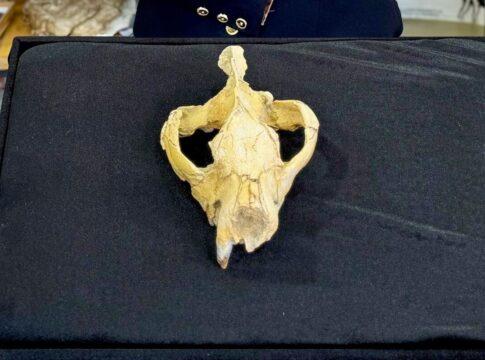In a discovery that’s got paleontologists purring with excitement, Professor Hesham Sallam and his team have unearthed a 30-million-year-old skull in Fayoum’s desert, revealing a new species of ancient carnivore they’ve dubbed “Bastetodon.” This predator, roughly the size of a leopard, roamed the lush forests of what is now the Fayoum desert, hunting with a bite that could make a crocodile blush.
The incredible find, published in the Journal of Vertebrate Paleontology, was led by Shorouq Al-Ashqar and collaborators from universities both near and far. The team stumbled upon the nearly complete skull thanks to a sharp-eyed team member who spotted a set of intimidating teeth peeking out from the sands. Talk about a toothsome discovery!
Bastetodon, named after the feline goddess Bastet, is a nod to ancient Egyptian symbolism, linking this fierce furball to the lion-headed goddess Sekhmet. The study didn’t just stop at naming this snazzy new species; it also revisited some dusty old fossils—Sekhmetops—to connect the dots in the hyaenodont family tree. Turns out, these toothy terrors were quite the globetrotters, spreading out from Africa to continents far and wide.
These finds underscore Fayoum’s status as a treasure trove of evolutionary history, offering a window into the climatic drama that paved the way for today’s animal kingdom. While Bastetodon and its kin eventually bowed out as Earth’s climate threw them a curveball, their bones tell a story of past ecological grandeur.
As co-author Matt Borths remarked, the region is a veritable goldmine for understanding the rise of Africa’s many iconic species. And despite a century of digging, the Sallam Lab has shown there are still plenty of bones in this desert to pick over. Here’s to more discoveries that keep us grinning like Cheshire cats!



